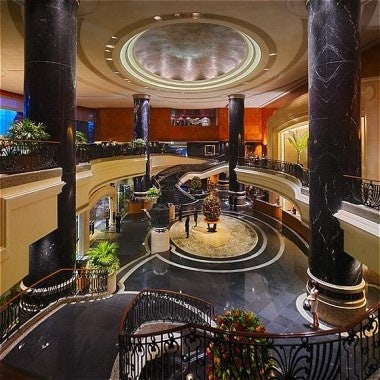Region's Massive Population Base, Increasing Business Travel And Cross-Border Tourism Indicate Vast Potential For Hotel Expansion#

Recently, we discussed the Shanghai luxury hotel market, which is heating up in preparation for next year's World Expo. With an increase in business travelers -- both foreign and Chinese -- headed to Shanghai, and a long-underserved four- and five-star hotel infrastructure, over the last 20 years Shanghai has attracted all of the world's top hoteliers to set up locations in this fashionable coastal city. With upwards of 7 million visitors expected to take part in the World Expo, construction on new luxury hotels has ramped up, leading some to worry that the city will suffer from oversupply after the Expo has ended.
While these Shanghai-based commentators fret about the state of the Shanghai luxury hotel market in 2010 and onward, in other major cities like Hong Kong, hoteliers are slightly more positive about their future prospects. As Bettina Wassener writes today in the New York Times, despite the black cloud that still lingers over the global hotel industry, the Asia-Pacific region remains a much-needed source of optimism:
In October, two major upscale hotels opened in Hong Kong, each with views of the skyscrapers huddled between the city’s mountains and harbor. One is a 381-room Hyatt Regency on top of a shopping mall in the Kowloon district of the city. The other is the 117-room Upper House, owned by the Hong Kong conglomerate Swire and within walking distance of the central business district on Hong Kong Island. A 300-room Ritz-Carlton is among the hotels due to open here next year.
Many of these projects got under way before the economic slowdown hit the travel industry hard, but even in the midst of the gloom, hotel companies big and small are pressing ahead with major expansion plans in Asia.
“We’re growing more rapidly here than in any other region of the world,” said Michael Issenberg, who heads Accor’s Asia-Pacific business. The French hotels giant, which runs the Novotel, Mercure and Sofitel brands, is opening 54 hotels, with about 10,000 rooms, in Asia this year and about as many again in 2010.
As Wassener goes on to point out, the hotel business throughout the Asia-Pacific region -- which, as a result of decades of underdevelopment, remains in many cities something of a blank slate -- has not experienced smooth sailing all the time. Failed projects and the aforementioned fears of oversupply have, in some critical cities in the Chinese mainland, caused unwelcome hiccups:
Not all projects have gone as planned, and not all has been rosy. In Beijing, a 34-story building under construction and designed by the Dutch architect Rem Koolhaas went up in flames in February after an illegal fireworks show started a fire. The building was to be completed in May and house a Mandarin Oriental hotel.
The Beijing Marriott, which opened just before the 2008 Olympics and was booked solid, saw its occupancy rate fall to about 20 percent earlier this year, according to a report in China Daily, a state-run newspaper. Marriott would not comment on individual hotel statistics.
A number of new hotels opened in Beijing and Shanghai for the Olympics last year and the 2010 World Expo set for next year, adding a lot of supply at a time of low demand.
Revenue per available room, a key measure of hotel performance, plunged 56 percent in Beijing in the first eight months of this year, according to a recent report by the Deloitte consulting firm. In Shanghai, the figure was down 35 percent as many hotels stand half empty.
Challenges nonwithstanding, industry executives remain staunchly bullish about the future of the hotel industry -- particularly in the luxury segment -- in Asia. As domestic travel increases in the Chinese mainland in tandem with a still-growing middle class, and more hoteliers expand into China's vast interior, the potential remains for years, if not decades, of sustainable growth in the Chinese luxury hotel market:
While hotels in China’s main international gateways — Shanghai, Beijing and Hong Kong — are under pressure, business in the secondary and tertiary cities in the country’s vast interior has mostly stayed resilient, as those areas depend less on international travel, and are more exposed to domestic Chinese travelers.
“Domestic destinations are doing very well,” Mr. Rinck said. “Cities like Hefei and the resort of Sanya — here, it’s more than 80 percent Chinese clients, and they have not stopped coming. Demand here is still increasing.”
Add to that China’s solid infrastructure. “China is building tens of thousands of kilometers of highways and railway track, and 97 new airports. This is the place to be,” said Richard Solomons, finance chief and head of commercial development at InterContinental Hotels Group.
International hotel operators are also positioning themselves for a huge expected increase in the number of Chinese traveling abroad.
“It’s key to have an on-the-ground presence here,” said Mr. Wilson of Fairmont, “to establish oneself as a brand that domestic travelers will come to as and when they travel abroad, which they surely will do so more and more in future.”